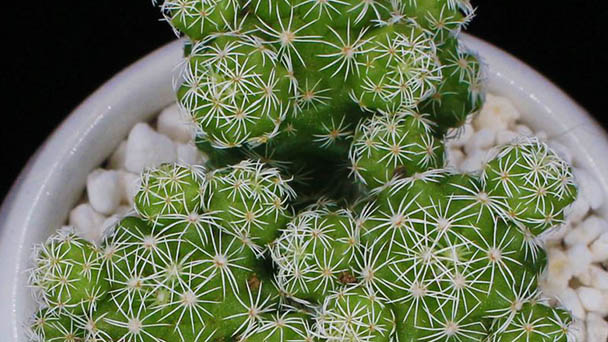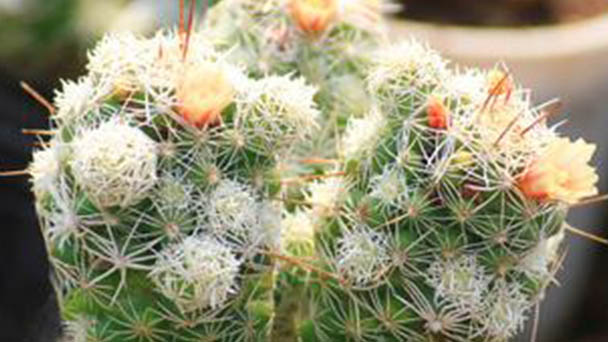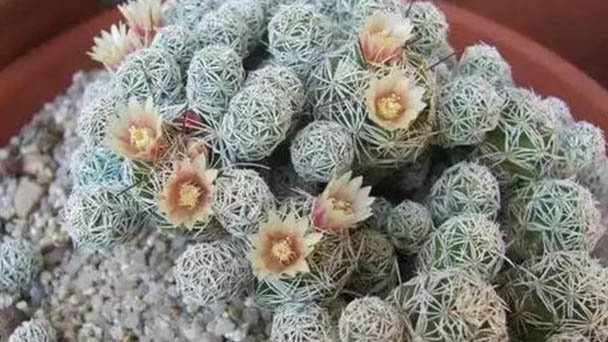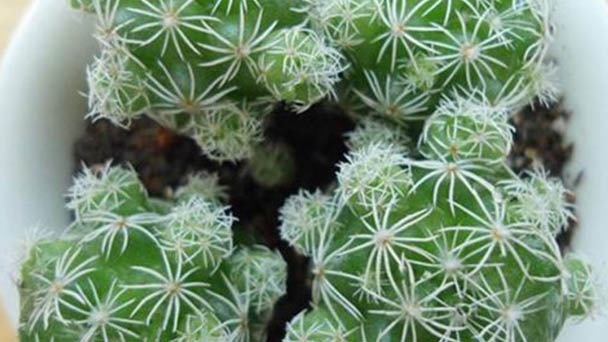Mammillaria Herrerae Profile
Written by Maggie
Oct 15 2021

Mammillaria herrerae is a well-known small species in the genus Mammillaria. The spines are short, soft, white and cute, and are a favorite collection object for fans. Many people often confuse Mammillaria herrerae and Mammillaria gracilis PFEIFF var.fragilis. Mammillaria herrerae and Mammillaria gracilis PFEIFF var.fragilis are actually not difficult to distinguish. Because of the camera angle issue may make everyone misunderstand, let’s take a look at Mammillaria herrerae. What is the difference with Mammillaria gracilis PFEIFF var.fragilis?
Mammillaria Herrera Picture

Mammillaria Herrera vs Mammillaria Gracilis
1. Mammillaria herrerae ball type, very few sub-balls.
2. Mammillaria gracilis PFEIFF var. fragilis is shaped like a finger, not a ball.
3. Compared with the thorns of Mammillaria herrerae, the thorns of mammillaria herrerae are denser and the silver fingers are sparse.
4. Mammillaria herrerae surface thorns are more dense and soft than silver fingers
The spines of Mammillaria herrerae are very dense, with no convex spines. Although Mammillaria gracilis PFEIFF var.fragilis has white spines, they are relatively sparse, and the spines are convex.
Mammillaria Herrera Care
Mammillaria herrerae is difficult to cultivate and has a short growth period. High temperature and humidity in summer often cause rot. It can be watered in a cool place when the pot soil is dry. Grafting grows well in the initial stage on the measuring ruler, and it is easy to decay if a little carelessness occurs over time. It is best to keep grafting baby balls in order to preserve the species.

Mammillaria Herrera Lighting Requirements
1. Mammillaria herrerae belongs to the cactus family, but it should not be exposed to the sun for a long time, because the plants tend to become soft and dwarfed after exposure to the sun.
2. High temperature and humidity in summer can easily cause rot of Mammillaria herrerae;
3. Full sun can be used in winter, and a small amount of water can be supplied for Mammillaria herrerae in warm conditions.
Mammillaria Herrera Temperature Care
1. In summer, the temperature is high, and sunshade and ventilation are required for Mammillaria herrerae.
2. In winter, it is recommended to move indoors to prevent frostbite roots of Mammillaria herrerae.
3. Watering: The demand for water of Mammillaria herrerae is not large. If the soil is dry, water it again. Watering it thoroughly once is enough. If the amount of water is too large, it will easily grow.

Latest Updated
- Benefits of Bugleweed - 7 Science-backed Health Benefits
- Bugleweed Dangers & Side Effects - Is It Poisonous?
- How to Plant Evergreen Trees - What You Should Know
- When to Plant Evergreens - Grow Guide for Evergreen Trees
- 12 Wonderful Evergreen Shrubs for Your Garden
- 12 Popular Evergreen Plants with Pictures for Beginners
- When And How To Prune A Lilac Bush Like a Pro
- How to Grow & Care for Lilac Vine (Hardenbergia Violacea)
- Japanese Lilac Tree (Syringa Reticulata) Care & Propagation Guide
- Shumard Oak Pros and Cons - What to Know
Popular Articles
- Winter maintenance of Antirrhinum Majus
- How to Grow Terminalia Mantaly Tree
- How to Grow and Care for Crossostephium Chinense
- How to grow Antirrhinum Majus in spring
- Peristeria Elata (Dove Orchid) Profile: Info & Care Guide
- Underwatered Snake Plant (Sansevieria Trifasciata) - Signs And How To Fix
- How to Care for Brazilian Jasmine Plant (Mandevilla Sanderi)
- How to Grow & Care for Graptopetalum Purple Delight in Summer
- Rosa Chinensis (China Rose): Plant Growing & Care Tips
- How to Care for Baby Sun Rose (Aptenia Cordifolia)